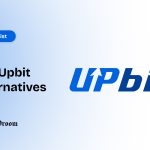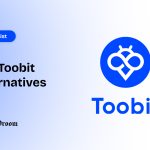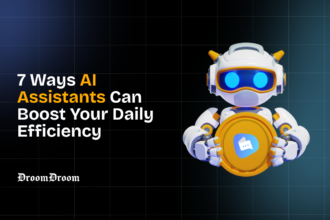In less than two years after ApeCoin (APE) hit its all-time high, the token has endured a drastic fall. In March 2022, APE raised eyebrows as it recorded its all-time high and fell by 97% in a single day. Ever since the token has struggled to replicate a good market run. Together, let’s journey through the fundamentals of this token that once caused a huge frenzy in the cryptocurrency market.
ApeCoin (APE) is the native token of the APE ecosystem. As an ERC-20 utility token, APE relies on the proof-of-stake consensus mechanism for security. Initially, the token is designed to empower and incentivize the APE ecosystem that is keen on becoming a force to reckon with in the web3 space. However, the popularity of the token has seen its utilization gradually spread beyond the Ape Ecosystem.
Team Members and Background
More so, ApeCoin is issued by the ApeCoin DAO (Decentralized Autonomous Organization) which is the legal representative of the project. All holders of APE are members of the DAO and they reserve the right to vote on issues relating to the ecosystem. Some of these issues are system upgrades, fund allocation, partnerships, formation of new policies.
While the ApeCoin DAO governs the Ape ecosystem, the autonomous organization is officially represented by the ApeCoin Foundation. The Foundation helps in implementing decisions adopted by the DAO. Additionally, as the legal representative of the DAO, the ApeCoin Foundation caters to the overall growth of the ecosystem.
It is worth establishing that the ApeCoin Foundation is headed by a Board that comprises five (5) members. In most cases, the Board is saddled with the responsibility of executing the visions and targets of the Foundation. According to the regulation of the ApeCoin Foundation, the tenure of the Board only lasts a year. At the end of each administration, members of the ApeCoin DAO; mostly APE holders cast their votes to elect a new Board.
The ApeCoin Ecosystem
The ApeCoin ecosystem is a vast web3 community that consists of every holder of APE and some notable NFTs collections. Primarily, the holders of the ApeCoin are the foundation of the ecosystem. Meanwhile, when ApeCoin launched in May 2022, holders of the Bored Ape Yacht Club (BAYC) NFT received some of the tokens as part of the startup effort.
Thereafter, Yuga Labs adopted ApeCoin as the utility token of the BAYC ecosystem. Thus, making it the official token for purchasing BAYC’s merchandise and event ticket. So we consider the BAYC NFT collection to be part of the ApeCoin ecosystem. Other NFT collections like Mutant Ape Yacht Club (MAYC), CryptoPunks, Meebits, and Bored Ape Kennel Club (BAKC) relating to BAYC and Yuga Labs belong to the ecosystem as well.
The Otherside metaverse is another prominent project within the ApeCoin ecosystem. Yuga Labs, Animoca Brands, and BAYC all collaborated to organize a Dutch auction-style for Otherside Lands in April 2022. Then, the team mandated that payment for Otherside Lands be made using ApeCoin. The directive led to an immense surge in the value of the token. Yugaverse is another well-known project within the ApeCoin ecosystem.
It may be tempting to attribute the creation of ApeCoin to Yuga Labs. This general assumption emanated from various reasons. Foremost, since Yuga Labs’ host of NFTs collection carries the name “Ape” one can easily assume that Yuga Labs created ApeCoin. Nonetheless, on various occasions, the NFT giant has denounced its ownership of the token.
Against popular opinion, ApeCoin was created by the ApeCoin DAO, not Yuga Labs. It is no coincidence that the DAO organized and executed the initial distribution of the token. Nonetheless, Yuga Labs has admitted to an existing relationship between the two.
On the official website of Yuga Labs, the firm indicated that it is a contributor to APE and also a member of the ApeCoin DAO. In recognition of the existing relationship between the two organizations, Yuga Labs gifted the ApeCoin DAO a special NFT.
Tokenomics of Apecoin
Distribution
ApeCoin has a fixed supply of 1 billion. The project team allocated 47% of the total supply to the DAO Treasury. Also, holders of BAYC and MAYC received 15% of the token, while another 15% was allocated to Yuga Labs. Launch contributors received 14% of the total supply, and BAYC founders received 8.0%.
Lastly, the project team allotted 1% to the Jane Goodall Legacy Foundation (JGLF). The donation to JGLF is aimed at supporting the foundation’s educational initiatives and research on environmental issues. It is worth mentioning that about 30% of ApeCoin’s total supply was unlocked when the project launched. The rest were structured to unlock gradually at certain intervals till all the tokens become available by the end of 2026.
Use Cases
Primarily, APE is designed for adoption by a host of web3 and metaverse projects. However, the token is more relevant in the APE ecosystem as it serves a lot of purposes. The most important usage of ApeCoin is how it permits its holders to participate in the governance of the ApeCoin DAO. Also, APE allows holders to explore some parts of the ecosystem that are reserved; with the token, you can access exclusive games and initiatives.
Similarly, third-party developers can participate in the Ape ecosystem by integrating ApeCoin into their project. Likewise, ApeCoin rose to prominence during the minting of 55,000 parcels of virtual lands known as “Otherside.” The Otherdside NFTs were valued in APE and they recorded about $300 million in sales. Transactions relating to the NFT collection were carried out in ApeCoin.
In recent times, we’ve witnessed how the usage of ApeCoin overlaps beyond projects relating to Yuga Labs. Winnings and perks on Benji Bananas, a game developed by Animoca Brands, are paid in APE.
Competition
Decentraland (MANA)
MANA, a native token to popular metaverse and web3 platform, Decentraland is one of the direct competitors of APE. This is due to how the two tokens are drivers of their respective ecosystem towards becoming a force to reckon with in the web3 landscape.
Axie Infinity Shard (AXS)
AXS is the native token of the Axie Infinity ecosystem. The coin serves as the governance token of the ecosystem which allows holders to vote on key issues relating to Axie Infinity. Additionally, holders of AXS have the right to enquire about how the funds in the Axie Community Treasury are spent.
The Sandbox (SAND)
SAND the native token of popular web3 project, The Sandbox is also a direct competitor of APE. As the utility token of The Sandbox ecosystem, holders of the token can use SAND to create ASSET coins. Furthermore, holders of SAND can as well buy and sell ASSET on the Sandbox marketplace.
Future of The Project
The future of ApeCoin seems blurry at the moment. This is not unconnected to the fact that the prosperity of the token is attached to the success of the Ape ecosystem. Evident to this submission is how the token rallied massively during the auction of the Otherdeeds NFTs.
Therefore, APE might need the recurrence of the attention it enjoyed during the auction of the Otherdeed collections to pose good returns for holders.
Also, most projects within the APE ecosystem are NFTs, and the cooling interest in virtual collectibles is also a major factor militating against the future of the project. Nonetheless, it is not entirely over for APE as an interesting project within its ecosystem can breathe life into its dying state.
Drawback and Weaknesses
One of the major weaknesses of APE is its limited relevance to the Ape ecosystem. The token is struggling to attract more use cases outside its ecosystem. This limitation to an extent has halted the growth of the token toward becoming a major name in the market.
Our Takeaway
Against all setbacks and fierce competition in the web3 sector, APE stands tall as an interesting project. While we admit that the token has its good sides, we urge investors to trade or acquire APE with caution.
Like most cryptocurrencies, ApeCoin is highly volatile which can inflict huge losses on investors. On the flip side, the token has shown flashes of rewarding investors’ faith in it. Above all, we urge investors to carry out enough findings before investing in ApeCoin and any other cryptocurrency.



















